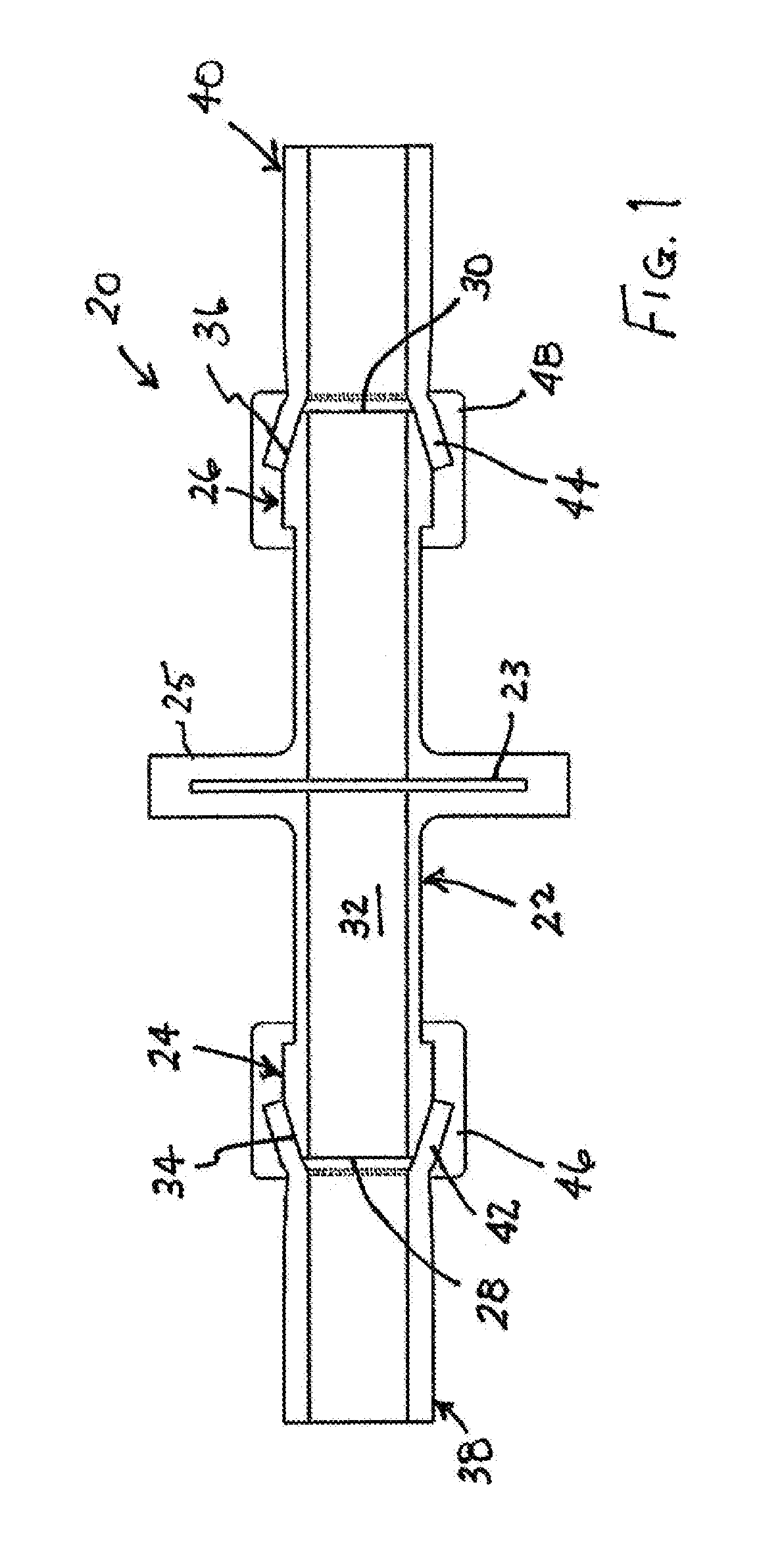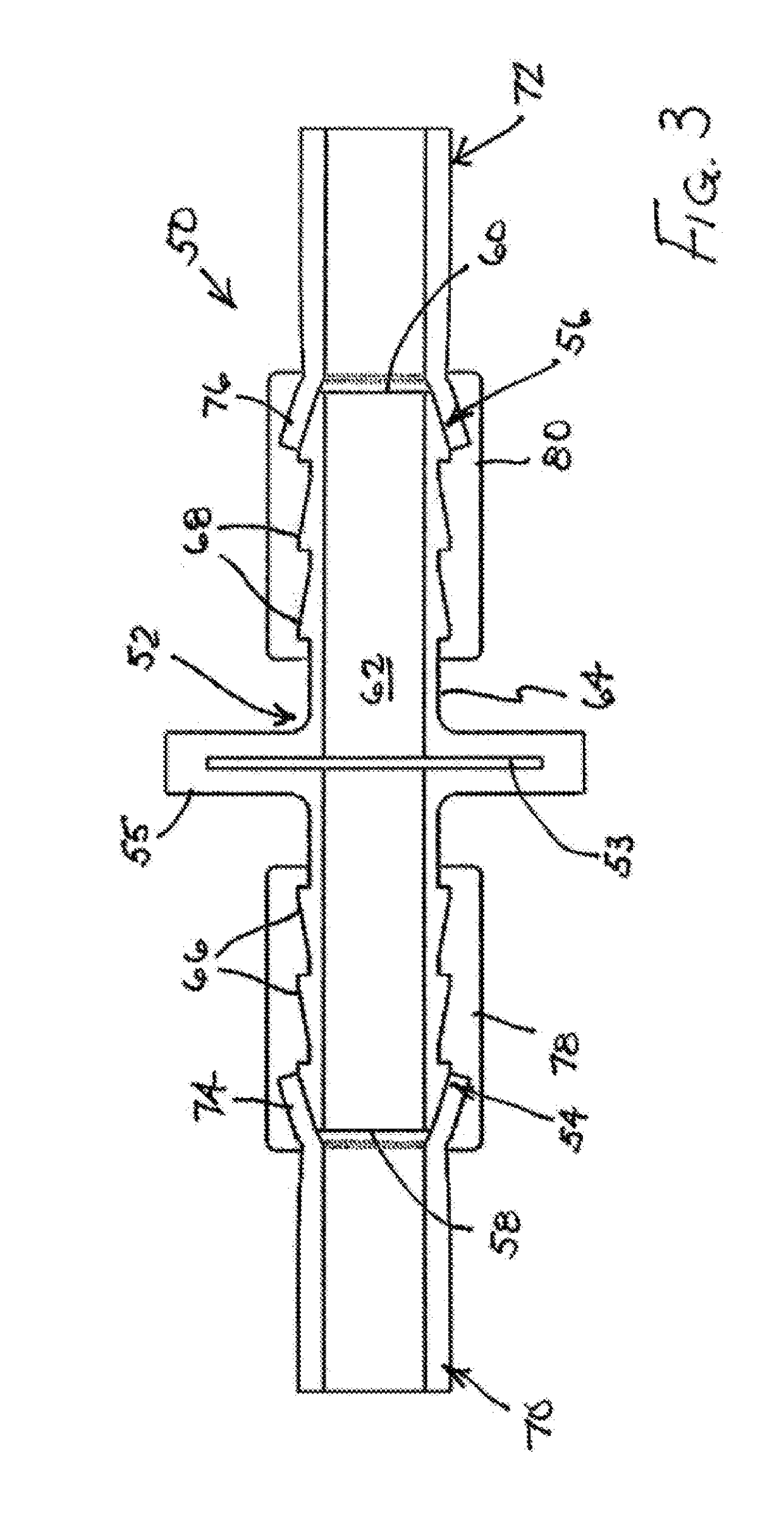Connector and tubing assembly and method of molding connector and tubing assembly
- Summary
- Abstract
- Description
- Claims
- Application Information
AI Technical Summary
Benefits of technology
Problems solved by technology
Method used
Image
Examples
Embodiment Construction
[0042]As depicted in FIGS. 1 and 2, a connector and tubing assembly 20 comprises a preformed connector member or fitting element 22 incorporating a filter element 23 within a flange 25 and having a pair of ends 24 and 26 with respective openings 28 and 30 that communicate with one another through a lumen 32 of the connector member. Connector or inline filter member 22 is formed at each of end 24 and 26 with a respective tapered or conical structure 34 and 36 extending radially outwardly from an outer surface 37 of the connector member. Two tubes 38 and 40, which are equal in number to the ends 24 and 26 of the connector member 22, each have a terminal portion 42 and 44. Ends 24 and 26 of connector member 22 are each inserted into the terminal portion 42 and 44 of a respective tube 38 and 40 so that the respective terminal portion is deformed to flare outwardly, as shown in FIG. 1. A layer of thermoplastic or polymeric material is molded in separate amounts or aliquots at respective ...
PUM
| Property | Measurement | Unit |
|---|---|---|
| Moldable | aaaaa | aaaaa |
Abstract
Description
Claims
Application Information
 Login to View More
Login to View More - R&D
- Intellectual Property
- Life Sciences
- Materials
- Tech Scout
- Unparalleled Data Quality
- Higher Quality Content
- 60% Fewer Hallucinations
Browse by: Latest US Patents, China's latest patents, Technical Efficacy Thesaurus, Application Domain, Technology Topic, Popular Technical Reports.
© 2025 PatSnap. All rights reserved.Legal|Privacy policy|Modern Slavery Act Transparency Statement|Sitemap|About US| Contact US: help@patsnap.com



